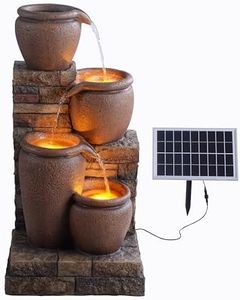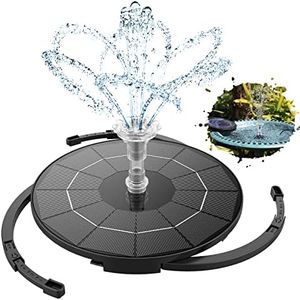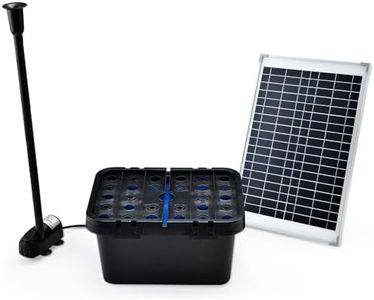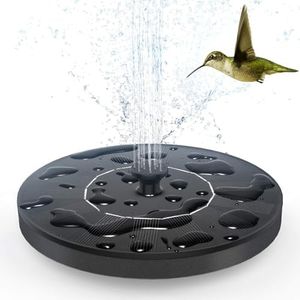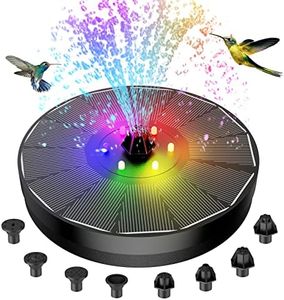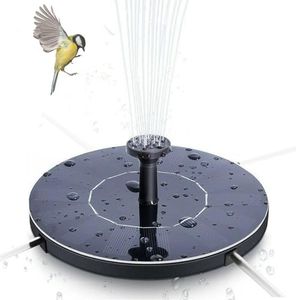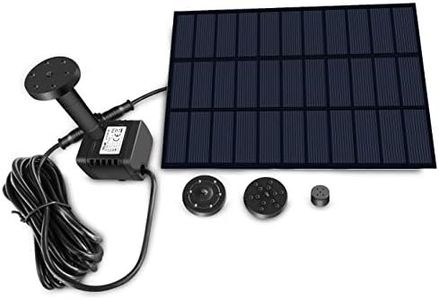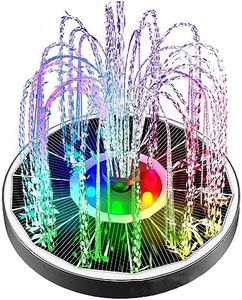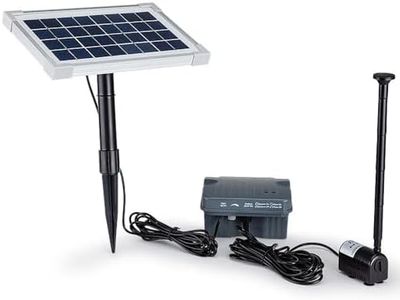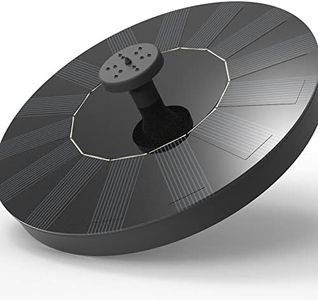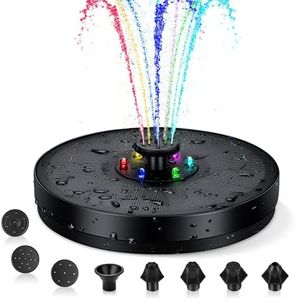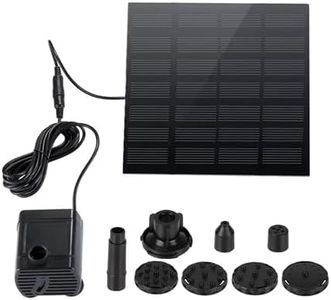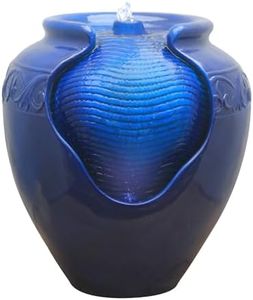We Use CookiesWe use cookies to enhance the security, performance,
functionality and for analytical and promotional activities. By continuing to browse this site you
are agreeing to our privacy policy
10 Best Solar Water Fountains
From leading brands and best sellers available on the web.Buying Guide for the Best Solar Water Fountains
When choosing a solar water fountain, it's important to think about where you want to place it, how much sunlight the area receives, and what kind of effect you want in your garden or space. Solar water fountains are a great way to add a peaceful, eco-friendly feature without the hassle of electrical wiring. The main things to consider are how well the fountain suits your outdoor environment, how reliable it is, and whether it matches your style and maintenance preferences.Solar Panel WattageSolar panel wattage refers to how much electricity the solar panel can generate from sunlight. It is important because higher wattage panels can provide more power to run the fountain more consistently, especially on cloudy days or during shorter daylight hours. Solar panels for fountains often range from low (about 1-2 watts), medium (around 2-5 watts), to high (above 5 watts). Lower wattage is suitable for small fountains or places with a lot of sun exposure. Medium wattage is ideal for average-sized fountains in moderately sunny spots, while higher wattage panels work well for larger fountains or darker areas. To choose the right wattage, consider how much sun your location gets and how powerful you want the water flow to be.
Pump Flow RatePump flow rate measures how much water the pump moves, usually in liters or gallons per hour (L/h or GPH). This impacts how strong or gentle the water flow will be in your fountain. Flow rates can be divided into low (under 100 L/h or 25 GPH), medium (100-300 L/h or 25-75 GPH), and high (over 300 L/h or 75 GPH). If you want a calm, trickling effect, a lower flow rate can work well. For more dramatic sprays or larger fountains, a higher flow rate is better. Your choice should reflect the size of your basin and your personal preference for water sound and movement.
Battery BackupA battery backup stores solar energy so the fountain can run even when the sun isn't shining. This feature is key for keeping the fountain operational during cloudy days or evenings. Battery backup options can range from models with no backup at all, to those with a few hours of reserve, and to those capable of full-day operation without sun. If you want your fountain to work only in sunlight, you don't need a backup. If you prefer a continuous display, even at night or on overcast days, look for a fountain with a larger battery backup.
Material and DurabilitySolar water fountains come in various materials such as resin, ceramic, metal, or stone. The material affects the fountain’s durability, weight, and appearance. Lightweight resin is easy to move but may not last as long outdoors, while metal or stone is more durable but heavier. Choose a material that matches your climate conditions (for example, some materials handle freezing weather better) and your ability to maintain the fountain.
Fountain Style and SizeThe style and size of the fountain determine how it fits into your space, both visually and practically. Styles range from simple birdbaths and floating fountains to tiered or wall-mounted designs. Sizes can be small for table tops, medium for patios, or large for gardens. Think about the available space and how prominent you want the fountain to be. Smaller fountains suit balconies or small gardens, while larger ones can become a central feature in bigger spaces.
Ease of MaintenanceMaintenance refers to how simple it is to keep the fountain clean and functioning. This includes cleaning debris from the pump, preventing algae buildup, and winterizing the fountain if needed. Some models have removable pumps or easy-to-access panels, which make cleaning easier. If you want minimal upkeep, look for designs marketed as easy to maintain or with accessible parts. Consider your willingness to spend time on maintenance when deciding.
